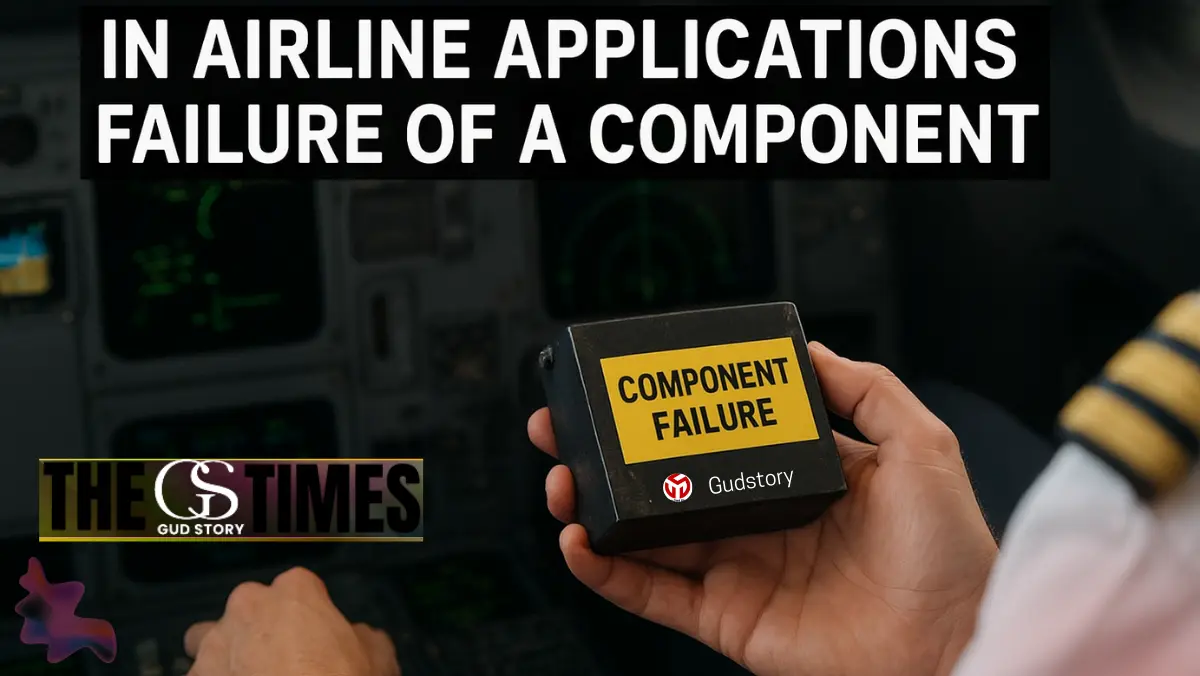Introduction
When I first began studying aviation, one phrase kept appearing in technical manuals and industry reports—in airline applications failure of a component. At first, it sounded like dry engineering jargon, the sort of thing you’d only hear in classrooms or accident investigation summaries. But the more I learned, the more I realized how central this idea is to everything about flight safety, airline operations, and even the passenger experience.
- Introduction
- What does “in airline applications failure of a component” mean
- Common causes of component failures in airline applications
- Mechanical wear and tear
- Material fatigue and corrosion
- Design or manufacturing defects
- Environmental factors
- Human error
- Real-world examples and case studies
- The risks and consequences of component failure
- Preventing and detecting failures
- The future of component reliability in airlines
- FAQs
- Conclusion
Think of it this way: imagine taking a road trip and your car’s air conditioning stops working. Annoying, sure, but not life-threatening. Now, imagine you’re flying across the Atlantic and a navigation sensor goes out mid-flight. Even with backup systems, that’s a much bigger deal. This concept—the breakdown of parts, systems, or equipment is all about the breakdown of parts, systems, or equipment and the massive ripple effect they can create.
In this article, I’ll share not just the technical explanations but also my journey of understanding these concepts. Along the way, I’ll break down real-world aircraft component failure case studies, explore how engineers tackle component failure modes in aircraft applications, and discuss how modern tools like predictive maintenance and aircraft component failure detection are reshaping aviation safety.
What does “in airline applications failure of a component” mean
At its core, the phrase describes the situation where any part of an aircraft fails to perform as intended. That could be something minor, like a reading light above your seat, or something critical, like an engine turbine blade. Aviation doesn’t treat all failures equally, of course. Engineers categorize failures into:
- Critical failures: These involve systems essential for safety, like engines, avionics, or hydraulic systems.
- Non-critical failures: These might disrupt comfort or efficiency but don’t endanger safety directly.
In the world of component failure analysis in aviation, engineers often say that “there are no small problems in flight.” Even non-critical issues matter because they can escalate if left unchecked. For example, a tiny hydraulic leak, which might seem minor today, could compromise the reliability of an aircraft’s systems tomorrow.
Common causes of component failures in airline applications
When I first asked an experienced airline mechanic about failures, he chuckled. ‘It’s never just one reason,’ he said.” That stuck with me because in aviation, failures usually stem from multiple interconnected factors. Here are the most common:
Mechanical wear and tear
Aircraft are complex machines with thousands of moving parts. Over time, friction and stress naturally degrade components, leading to aircraft mechanical failure.
Material fatigue and corrosion
constant changes in air pressure. Add environmental effects like moisture or salt exposure, and you have corrosion issues.
Design or manufacturing defects
Even with strict quality controls, sometimes a defective part slips through. While rare, these defects have caused famous incidents that are well-documented in aircraft component failure analysis reports.
Environmental factors
Bird strikes, extreme weather, and temperature fluctuations all contribute to flight system component breakdown.
Human error
Maintenance mistakes or incorrect installation of parts often show up in airline maintenance failure response investigations.
Real-world examples and case studies
To make this more tangible, let’s look at some aircraft component failure case studies:
- Engine fan blade failure: In 2018, a Southwest Airlines flight experienced an engine failure due to a cracked fan blade. The plane’s redundant systems kept the aircraft safe, but it highlighted the importance of flight safety component monitoring.
- Hydraulic system malfunction: A famous Airbus A320 incident involved a hydraulic fluid leak, which made it harder to control the landing gear.hydraulic fluid, which made it difficult to lower the landing gear. This showed the impact of airline system component degradation on routine operations.
- Faulty flight computers: Faulty sensors in the Boeing 737 MAX contributed to tragic accidents, reminding the industry how airline equipment malfunctions can be catastrophic when redundancy fails.
These aren’t just stories—they’re lessons that drive aviation component testing and better aviation safety protocols.
The risks and consequences of component failure
Whenever I think about this topic, I recall the first time I read a Brainly discussion on component failure in aviation, where a student asked, “Why is this even such a big deal if planes have backups?” The answer is simple: while backups are crucial, they don’t eliminate all risk.
Consequences include:
- Safety risks: Lives are at stake if one failure leads to another.
- Operational disruption: Cancellations, delays, or diversions can cost airlines millions.
- Financial costs: Beyond repairs, aircraft part replacement and inspections are expensive.
- Passenger trust: After incidents, airlines often face reputation damage.
- Regulatory scrutiny: Authorities demand extensive investigations and compliance proof.
In short, aviation component reliability failure has a human, financial, and reputational cost.
Preventing and detecting failures
So how does the industry stay ahead of failures? My first visit to a maintenance hangar was eye-opening. I watched technicians conduct flight equipment inspection with incredible detail—measuring wear, testing sensors, and logging every step. This meticulous process forms the backbone of aviation maintenance procedures.
Scheduled maintenance
Airlines follow strict maintenance intervals—A, B, C, and D checks—to ensure every part is examined regularly.
Systems redundancy
Every critical system has backups. Engines, navigation computers, and flight controls are duplicated, which keeps flights safe even during aircraft part failure consequences.
Predictive maintenance
This is the future. By using AI, IoT sensors, and aircraft component fault diagnosis tools, airlines can catch problems before they become failures. Predictive maintenance of aircraft component failure detection is a hot area in aviation research.
Failure analysis methods
Tools such as reliability engineering, aircraft component failure analysis, FMEA, and fault tree analysis help engineers anticipate potential issues.
The future of component reliability in airlines
Looking forward, the industry is investing heavily in:
- Digital twins: Virtual models of aircraft that simulate wear and predict airline system component degradation.
- Smart materials: Alloys and composites that resist corrosion and cracks.
- Advanced monitoring systems: Better aviation equipment failure prevention through real-time data.
- More automation: AI-driven systems to support human engineers in aviation component reliability assessment.
The ultimate goal is simple: fewer surprises, fewer failures, and safer skies.
FAQs
1. What does in airline applications failure of a component mean?
It refers to any part of an aircraft not working as intended, ranging from small cabin systems to critical engines or avionics.
2. What are common causes of aircraft component failures?
Wear and tear, corrosion, design flaws, environmental stress, and human error are the main causes.
3. How do airlines prevent failures?
Through regular inspections, scheduled maintenance, redundancy systems, and predictive monitoring.
4. What happens if a critical component fails mid-flight?
Redundant systems usually compensate, but pilots may divert or land immediately depending on the situation.
5. Why study aircraft component failure case studies?
They provide real-world lessons that improve aviation safety protocols and reliability engineering practices.
Conclusion
Understanding in airline applications failure of a component isn’t just for engineers or pilots—it’s for anyone curious about what keeps planes flying safely. On my journey, I went from seeing this phrase as obscure technical jargon to appreciating it as the heartbeat of aviation reliability. Each aircraft system reliability assessment, every flight safety equipment malfunction review, and every aviation component testing session contributes to a safer future for all of us who step onto an aircraft.
Next time you board a plane and hear the reassuring hum of the engines, remember that behind it lies decades of aircraft component failure analysis, predictive maintenance, and relentless focus on preventing failures before they ever reach the runway.
















